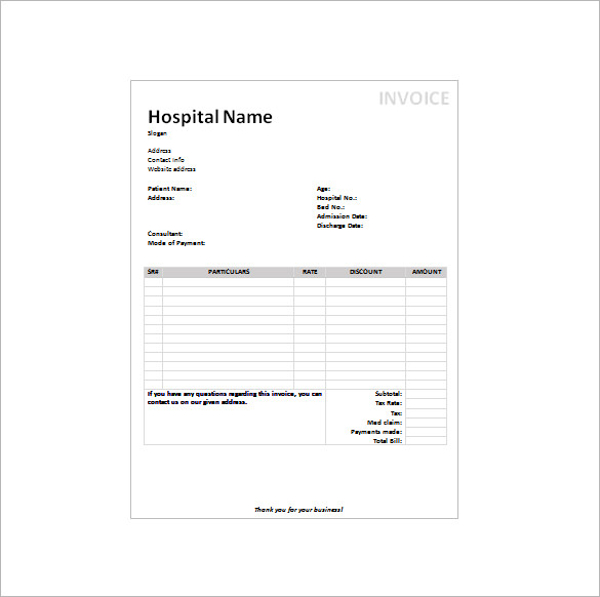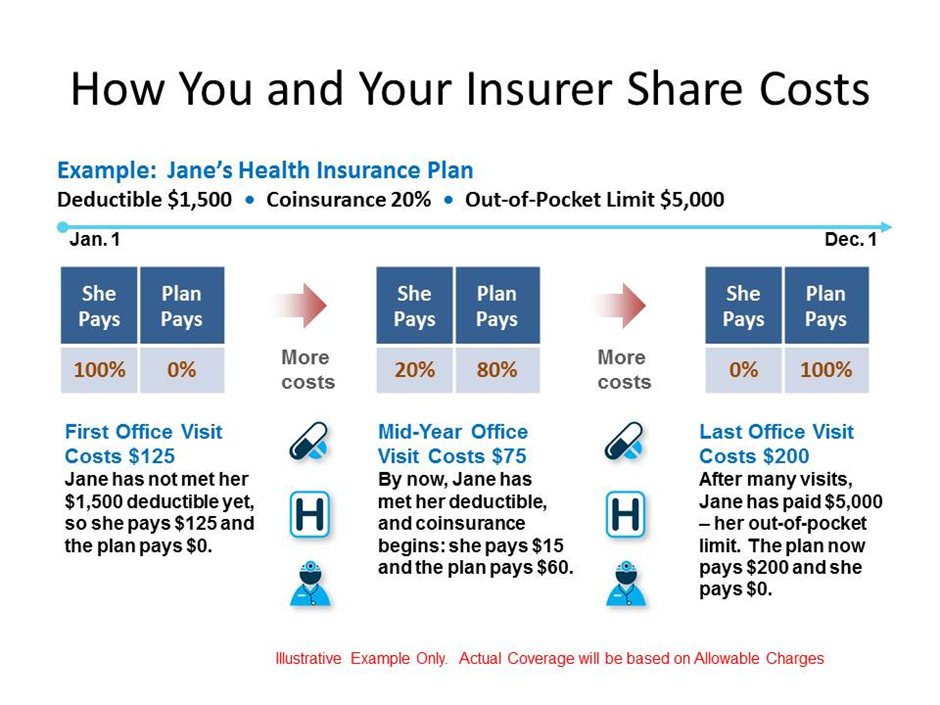As Health Savings Accounts have become quite popular, many people are asking, “What’s the difference between a traditional insurance plan and an HSA-based plan?” Both plans offer valuable insurance coverage to protect you from high-cost medical expenses, and yet there are some key differences. So let’s examine their core distinctions, the advantages and disadvantages, and the cost over time.
- ProfilePoints ™ measure the overall completeness of a provider's profile, including items like having a photo, a biography, insurance, payment options, etc. A full breakdown of points can be seen by providers with Doctor.com accounts when editing their profile on Doctor.com. By showing providers with higher ProfilePoints ™ first, we make it easier for you to quickly identify the most.
- A fixed amount ($20, for example) you pay for a covered health care service after you've paid your deductible. Let's say your health insurance plan's allowable cost for a doctor's office visit is $100. Your copayment for a doctor visit is $20. If you've paid your deductible.
On a traditional “co-pay plan” you and your employer pay a monthly premium to cover the cost of your health insurance. Then, when you go to the doctor or pick up a prescription, you pay a fixed cost called a “co-pay” and the insurance company generally covers the rest. Co-pay plans also have a deductible. Once you’ve met your deductible you also have a co-insurance phase with cost-sharing between you and your provider on high-cost medical expenses before you meet your max out-of-pocket. Once you’ve met your max out-of-pocket, insurance will then generally cover the balance. And, most all preventive services are typically covered 100%. Just check with your plan for those details.
A typical co-pay plan look something like this:
- $25 co-pay for an office visit
- $10 co-pay for generic prescription drugs
- $50 co-pay for brand name prescription drugs
. A copay applies for any care received for a medical condition that’s treated or monitored during a preventive visit. Scheduled office visit. All preventive services can be provided any time during the calendar year in which the member is eligible to receive the service.
Your deductible could be anywhere from $500 to $2,000, but for this example, let’s use $500 for the deductible.
- 80% co-insurance (you pay 20%)
- $3,000 out-of-pocket maximum
To put a number out there, let’s say that you and your employer pay $6,000 a year, or $500 per month for this plan. Keep in mind, this number will vary based on several factors.
Now let’s talk about HSA based plans.
With an HSA based plan, you often pay a lower premium in return for having a higher deductible. The key difference is that an HSA-based plan has two parts: Insurance PLUS a health savings account. Your HSA is a personal tax-free health savings account that can be used to pay for eligible medical expenses. Usage of your HSA funds may also count toward your deductible and coinsurance amounts. And, remember, like any other insurance plan you pay nothing for preventative care like annual check-ups.

Just like a co-pay plan, in an HSA based plan, you would still have a deductible, co-insurance and an out of pocket maximum. Since your deductible is higher in an HSA based plan, you and your employer will save money….le’t say that by moving to a $1,500 deductible, you and your employer now pay $5,000 a year instead of the $6,000 a year in the co-pay plan. If that $1,000 is put into your HSA, your HSA plan could look like this:
- $1,000 tax-free annual contribution into your HSA
- $1,500 deductible
- 80% co-insurance
- $3,000 out-of-pocket maximum
- $400 monthly premium
Let’s consider an example of how these plans actually work side-by-side.
Let’s say you’re changing a lightbulb and take a nasty fall—It happens, and nobody plans on a painful, broken wrist! After a trip to the Emergency Room, surgery and perhaps some physical therapy, you are feeling a bit better.

But you now have a $10,000 medical bill to cover the services.
In a traditional co-pay plan with a deductible of $500, you pay a co-pay for the ER (say $100), then you would need to pay $500 to meet your deductible. Finally, you would need to pay your portion of co-insurance which is 20% of the remaining $9,500 or $1,900. Then the insurance company would pay the rest. In this example, your out-of-pocket cost for this accident would be $2,500.

On the other hand, er…wrist…consider an HSA-based plan with a $1,500 deductible. That means you have to pay $1,500 out of your own pocket before your insurance kicks in.
Yes, $1,500 is a lot of money, but this is where having a health savings account will help you cover the cost of your medical expenses and help reach your deductible. Remember, that you and your employer saved $1,000 a year by going to the HSA based plan. If this money is deposited into your HSA, you have $1,000 a year to pay for medical expenses.
Office Copay
So now, you have $1,000 to help you reach your deductible, and you need $500 to reach your deductible. Like the co-pay plan, you still have co-insurance, so you will need to pay 20% of the remaining $8,500 or $1,700 or a total of $2,200 ($500 to reach your deductible that wasn’t in your HSA, plus the $1,700.)
So when you compare the co-pay plan with the HSA based plan in this example, in the co-pay plan, your out-of-pocket costs would be $2,500, but in the HSA based plan, your out of pocket costs were $2,200.
Remember, your HSA is a health savings account that you can contribute money to and use for medical expenses tax-free and these funds are yours even if you switch jobs. Your HSA spending may apply to your deductible and coinsurance if those expenses are covered by the plan, which in this case, a broken wrist! Your HSA can help you pay for qualified medical expenses like eyeglasses and dental work, but remember, these expenses will not apply to your deductible.
On a traditional co-pay or an HSA-based plan, your worst-case scenario of reaching your out of pocket maximum could be very similar. The big advantage for an HSA based plan is that:
- you paid less money for your health insurance each month,
- that savings is your money, and
- whatever you don’t spend rolls over year after year and is there when you need it.
It’s truly a compelling, game-changing concept.
For some perspective, did you know that in any given year about 70% of people will spend $700 or less on medical care? If you have an HSA based plan, this is good news because, since HSA funds roll over every year, you get to keep whatever you don’t spend, ultimately encouraging smart medical spending.
HSA funds can also be invested for tax-free growth and investment earnings creating a future financial asset as well as a rainy-day fund for medical services. Over time, you could build up substantial savings in your HSA, then, when you turn 65 years old, your HSA acts like a 401(k) and can be used as another retirement account. In summary, the best thing about an HSA based plan is that it gives you a strategy to save up pre-taxed money to pay for large, unexpected medical expenses.

As you can see, over time you could have more money in your HSA than your deductible, which means you would not have to pay out-of-pocket to meet your deductible.
Let’s review:
Both plans:
- Provide valuable insurance coverage
- Cover preventive services at 100%
Co-pay plans:
- Co-pay – pay fixed amount for medical care
- Lower deductible – insurance kicks in quicker
- Higher monthly premiums
HSA-based plans:
- Health Savings Account (HSA) benefit
- Higher deductible
- Lower monthly premiums
- Tax savings
We hope this helps you understand how the two plans work and how an HSA based plan could provide you with a smarter strategy to pay for healthcare in the future.
Costs
Find your TRICARE costs, including copayments,enrollment fees, and payment options.

- Most costs are for calendar year 2021 unless noted separately.
- For US Family Health Plan and TRICARE Prime Remote costs, choose 'TRICARE Prime' from the pull-down menu
- Visit the Cost Terms page for definitions to help you better understand TRICARE costs.
- If you're an unremarried former spouse, for the Continued Health Care Benefit Program (CHCBP), chose 'Retired' regardless of your sponsor's status
- Looking for dental costs? Visit the TRICARE Dental Costs section.
Office Copay
Copayments will be waived retroactively to March 18 for certain testing and office visits related to the testing. The test must be one approved, cleared, or authorized by the Food and Drug Administration to detect SARS-CoV-2 or diagnose COVID-19. If you paid any copayments for testing related to COVID-19 and the resulting office visits with a network or non- network provider, you may file a claim for reimbursement. For more information related to the coronavirus, visit the FAQ page.
